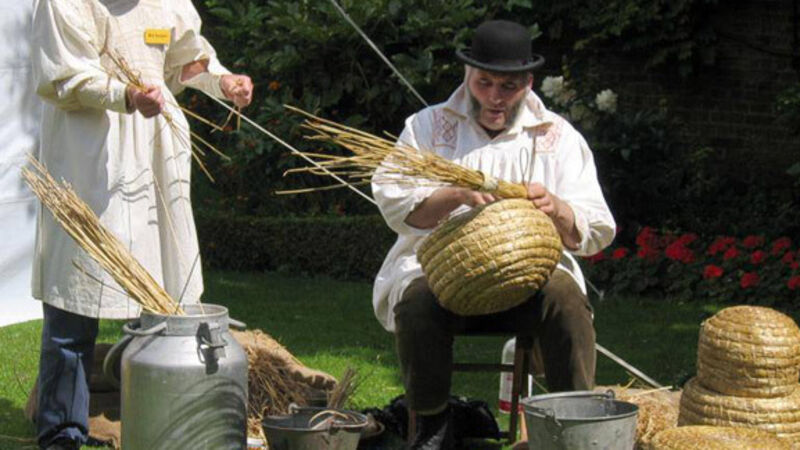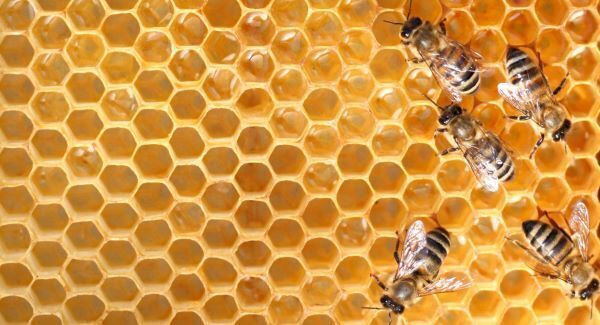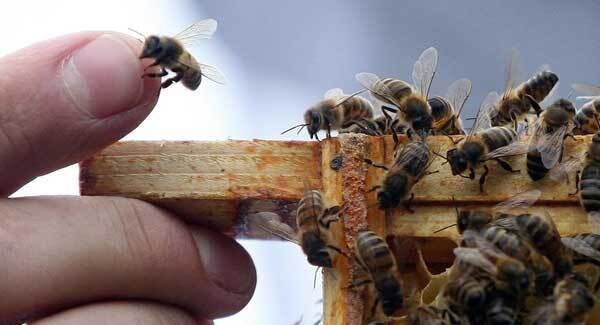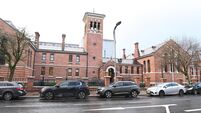Ancient skep beehive making is still used today

The word skip is thought to have come from an Icelandic Norse word skeppa which referred to a straw basket for measuring grain.
It was the Saxons who first investigated the potential of skeps for keeping bees in, and it was the Saxons who brought skeps to Britain when they surged westward to occupy lands vacated by the Romans after their empire collapsed in 410 AD.
The earliest mention of skeps in Ireland was in the 5th century, when they were used by St Gobnait who founded a Monastery of Nuns in Ballyvourney in County Cork, legend has it that she flung one of her bee skeps at intruders, and the stinging bees quickly brought the offenders to order.
Another account that retells how Gobnait as a beekeeper, magically transformed her bees and bee skeps to miraculously help the local O’Herlihy Chieftains after the rival O’Donoghue clan had come cattle rustling.
The O’Herlihys were away hunting in Kerry, and devoid of their cattle, were without subsistence or status.
The chieftain went to Gobnait for help and at the promise of conversion, she went to one of her skeps, said a prayer and the straw skep and all the bees magically turned into a brass war-faring helmet and all the winged bees disappeared.
When the chieftain looked up he saw a huge “swarm” of well -armed soldiers, neatly organised who would now do battle on his behalf.
In no time at all he rescued his cattle and the miraculous brass helmet was kept by the O’Herlihy family.

Prior to the use of a skep, the only other purpose-made hive was the alveary, a sharply conicle type basket made with willow or hazel, and plastered with a mixture of cow manure and ashes or sand to keep it weatherproof.
The word alveary is thought to have Latin roots, though there is no evidence that the alveary was a Roman invention. The alveary was eventually replaced by the skep.
Skeps were more rounded in shape and were made with much the same materials as the alveary — or whatever was available locally — the bees would line the skep with propolis themselves, a mixture of waterproof natural gums with antimicrobial properties.
Skeps had no built-in floor so they were placed on either timber platforms or rush mats to keep out the cold and damp, they were often tucked into purpose-made alcoves in stone walls called bee-boles, straw could be stuffed around the sides for insulation, and some of these boles even had wooden doors that could be closed when the weather was really bad. Some of these bee boles are to be seen in different parts of the country still.
Then as now, beekeepers were obsessed with swarming, only we are now intent on preventing or controlling, or maybe increasing the phenomenon.
The skep beekeepers depended on their bees to swarm and encouraged it by careful choice of the size of the skep, the colder and wetter regions tended to have smaller skeps to ensure the necessary congestion to encourage early swarms.
Swarming was further encouraged by careful choice of bees, the swarmier the better, with non-swarming types being eliminated, it is likely that the skep beekeepers are partly to blame for some of the strong swarming instincts still found in some strains of bees.

Throughout the summer the beekeeper would catch and hive swarms in empty skeps, then at the end of the season he would select the heaviest and lightest of his stocks for the honey harvest, the big ones had the most honey while the light ones would be on the weak side and probably would not survive the winter.
The harvesting of the honey could involve killing off the bees with sulphur and shaking out the dead bees, and then taking the honey comb, or in a kinder method, the skep beekeeper would move the bees from a full skep to an empty one.
The mid-weight hives were taken through the winter for the following year.
This was skep beekeeping at its simplest and it was practised for centuries, but beekeepers were always looking for less destructive ways of keeping their bees.
Beekeepers who own a skep now use it to catch swarms.
There are skep-making workshops from time to time, there is always one available at the National Honey Show in London, and it is always booked out.













